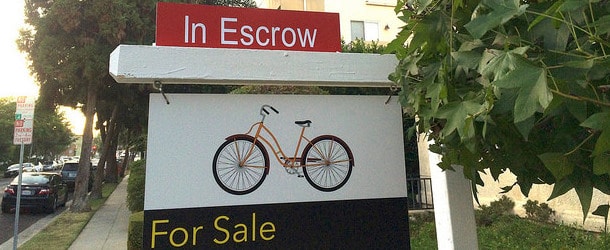
At least not yet…
As you probably know, the Fed slashed the federal funds rate to near-zero yesterday afternoon to prop up the economy as it contends with the growing coronavirus pandemic.
If you read the headlines, you might falsely assume the Fed just slashed mortgage rates by a full percentage point.
Combined with the half-point cut two weeks ago, you might be led to believe that mortgage rates are now truly rock bottom.
But in reality, those actions had nothing to do with consumer mortgage rates.
Those rate cuts were intended to help banks borrow from one another to ensure they maintain minimum reserve requirements.
When that key rate is lowered, the money supply rises and lending to businesses and consumers increases, thereby spurring economic activity.
That’s the whole point.
Didn’t the Fed Just Lower Mortgage Rates?
- The Fed rate cuts have no direct impact on mortgage rates
- They can serve as a guide for long-term rates, but the federal funds rate isn’t your mortgage rate
- Your mortgage rate didn’t just drop by 1%
- But the MBS buying program known as QE4 should lead to lower mortgage rates for consumers over time
Ok, great, so how does this affect mortgage rates?
Well, the Fed also announced the purchase of at least $200 billion in agency mortgage-backed securities (QE4), which is intended to bring down mortgage rates.
However, and this is a biggie, long-term fixed mortgage rates weren’t anywhere close to zero when they announced the news.
They actually hit record lows two week ago, which set off a refinance frenzy, and in turn caused an oversupply in the market.
Simply put, mortgage lenders were over capacity, and when there’s too much supply and not enough demand, prices must be adjusted.
In the case of mortgage rates, prices went up to stem demand.
This phenomenon is also driven by the fact that most mortgage lenders bundle and sell off their mortgages almost immediately after origination to investors.
If there are too many of these bundles of mortgages, known as mortgage-backed securities (MBS), floating around, prices must go down.
Or, mortgage rates must go up to make them more attractive to investors seeking higher yields.
And that’s why mortgage rates shot up after hitting record lows.
It also explains why the Fed took direct action to buy MBS, which will level the supply/demand imbalance.
In short, the Fed has agreed to be a major buyer of MBS, allowing mortgage lenders to lower mortgage rates again.
When Will Mortgage Rates Fall to 0%?
- Mortgage rates probably won’t ever go to 0% or anywhere close
- Despite European banks offering 0% rates or even negative rates
- The Fed’s QE4 program should stabilize and lead to lower mortgage rates
- Whether they return to record lows depends on what else goes on in the world over the next several months
Now remember, mortgage rates weren’t anywhere near 0% last week.
In fact, many lenders had raised rates so rapidly that the record lows and near-3% 30-year fixed rates were now actually closer to 4%.
If you’ve been following mortgage rates recently, you’ll know that a 4% 30-year fixed mortgage rate is nothing to get excited about.
Not only does it feel very average, it probably is high to a lot of homeowners. And it’s not just emotional.
There are plenty of homeowners out there with sub-4% interest rates, so for these millions of borrowers, there will be no financial incentive to refinance.
When lenders collectively raised rates last week, they effectively reduced the refinanceable population by millions of individuals.
The good news is that should also work to limit MBS supply, and when coupled with the Fed buying MBS, should push mortgage rates lower.
The problem is mortgage rates are nowhere close to zero, as they are in European countries, where they are even being offered below zero (negative rates).
So really, the Fed’s move is intended to keep the secondary market for mortgages intact, first and foremost.
To ensure that mortgage rates don’t rise further, crushing an industry that seemed primed for a windfall.
In other words, the first step here is stabilizing mortgage rates and erasing some of last week’s damage.
The next step is trying to rally back down to the record lows seen two weeks ago.
From there, the 30-year fixed would still be perched at/above 3%, so a rate of zero or anywhere close to it would still be worlds apart.
And if you believe the head of the nation’s largest retail mortgage lender, Quicken Loans, we won’t even see 30-year fixed mortgage rates fall below 3%.
So regardless of what the Fed is doing, you might want to temper your expectations.
That being said, we could test new all-time lows eventually, but it’s probably going to take some time to play out.
Lenders have no intention of getting caught out twice, so they’ll be very hesitant to lower rates significantly at the moment.
If we’re able to resolve the coronavirus in the meantime, that could actually work against interest rates, assuming the economic damage is less than what’s baked in and we get back into gear.
In summary, yesterday’s Fed announcement is excellent news for mortgage rates, but it’s going to take time and favorable conditions for mortgage rates to even get back down to 3% again.



